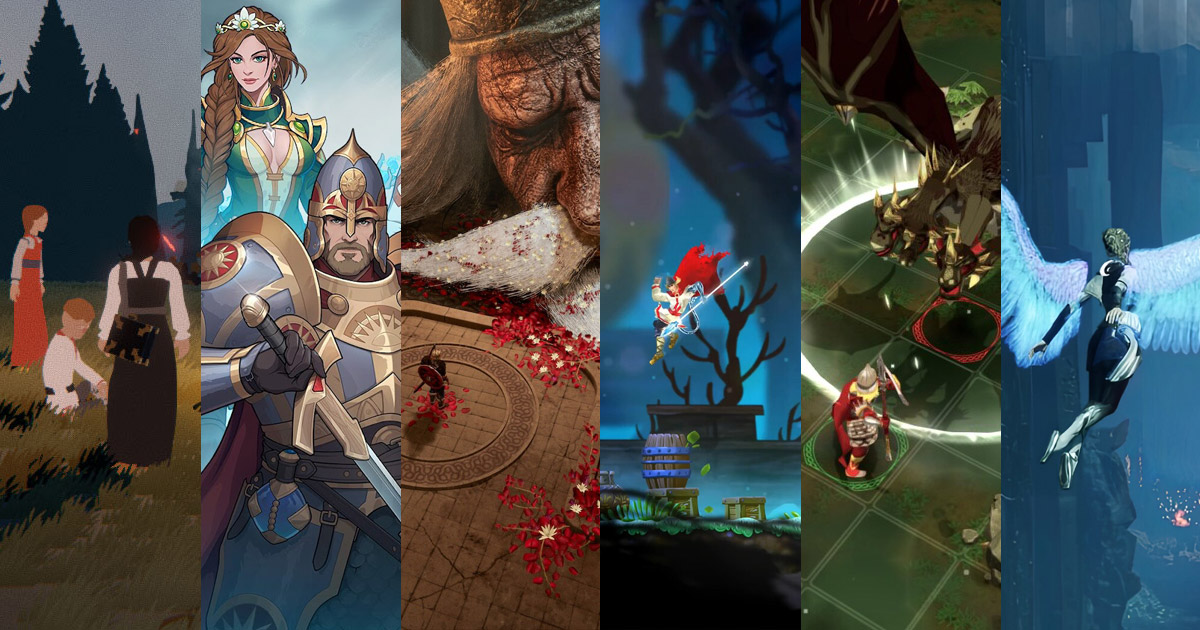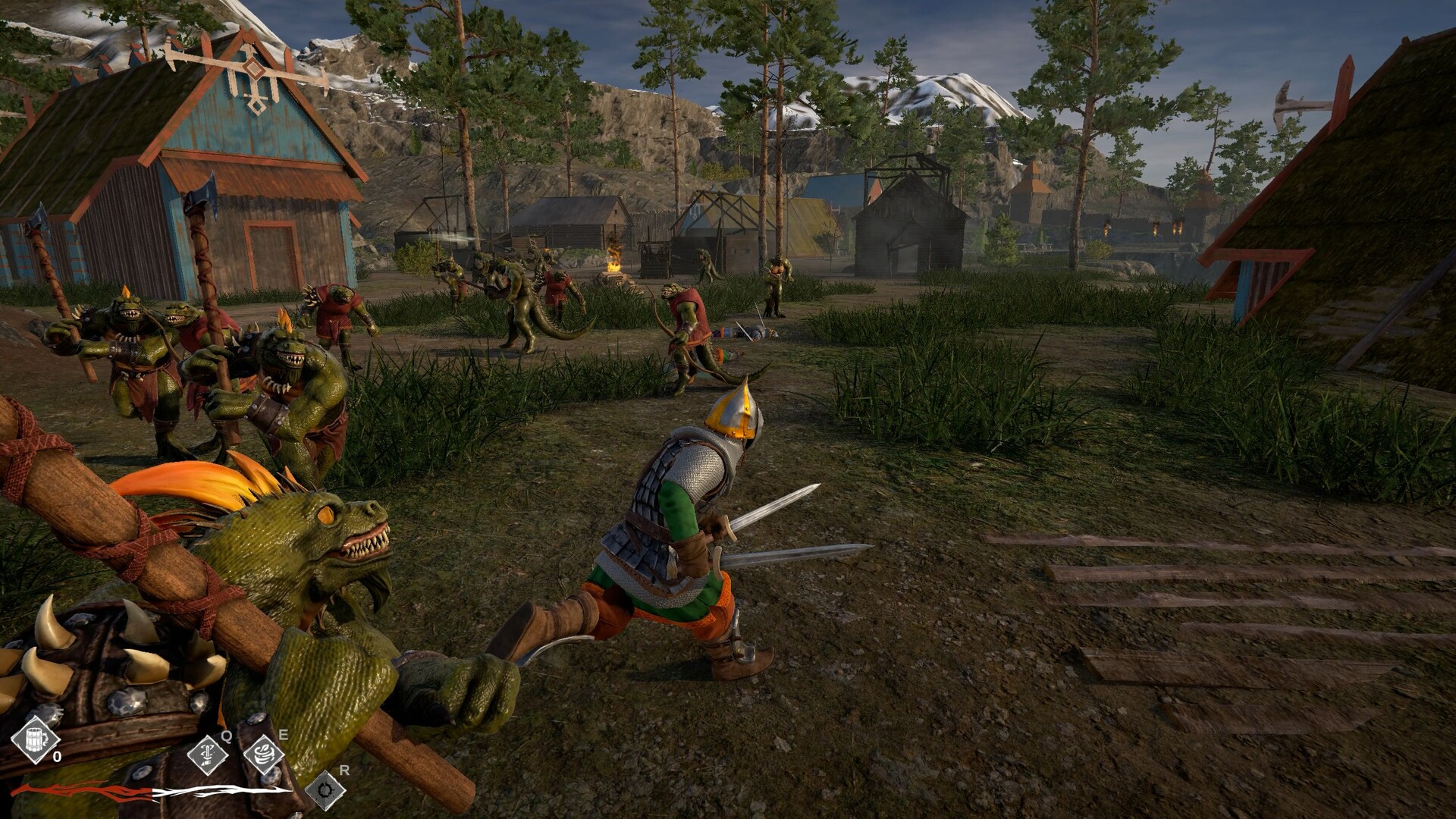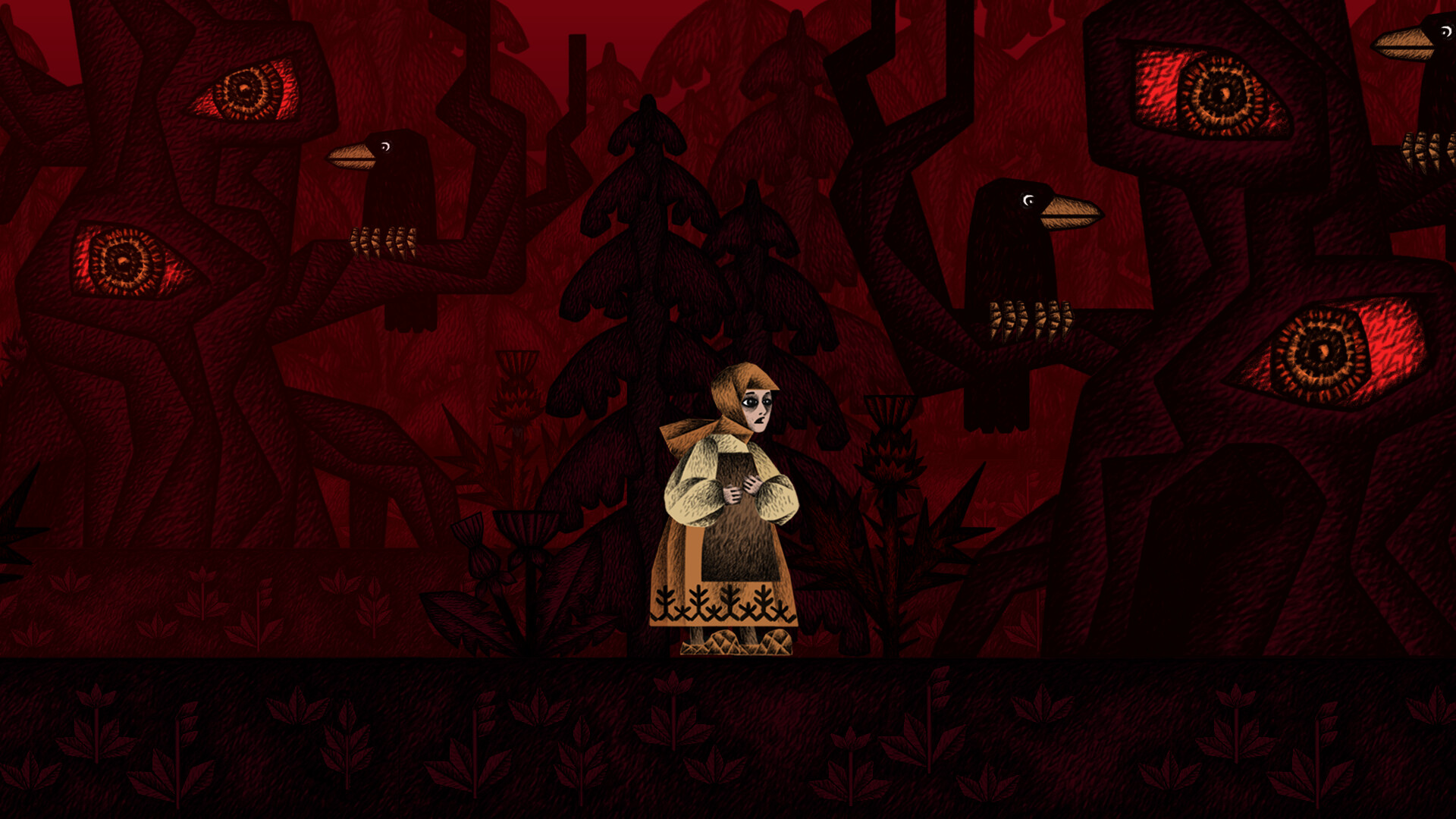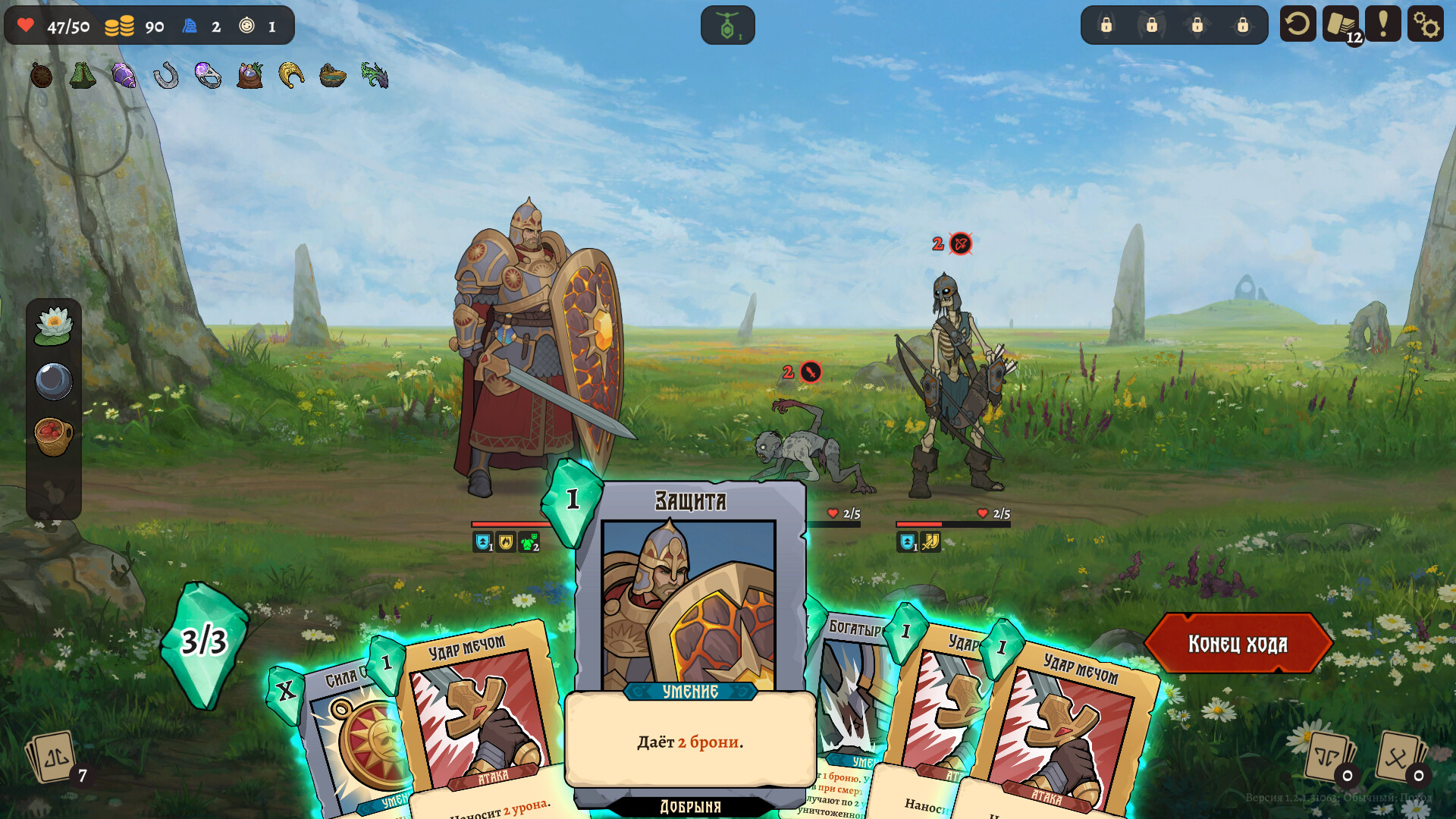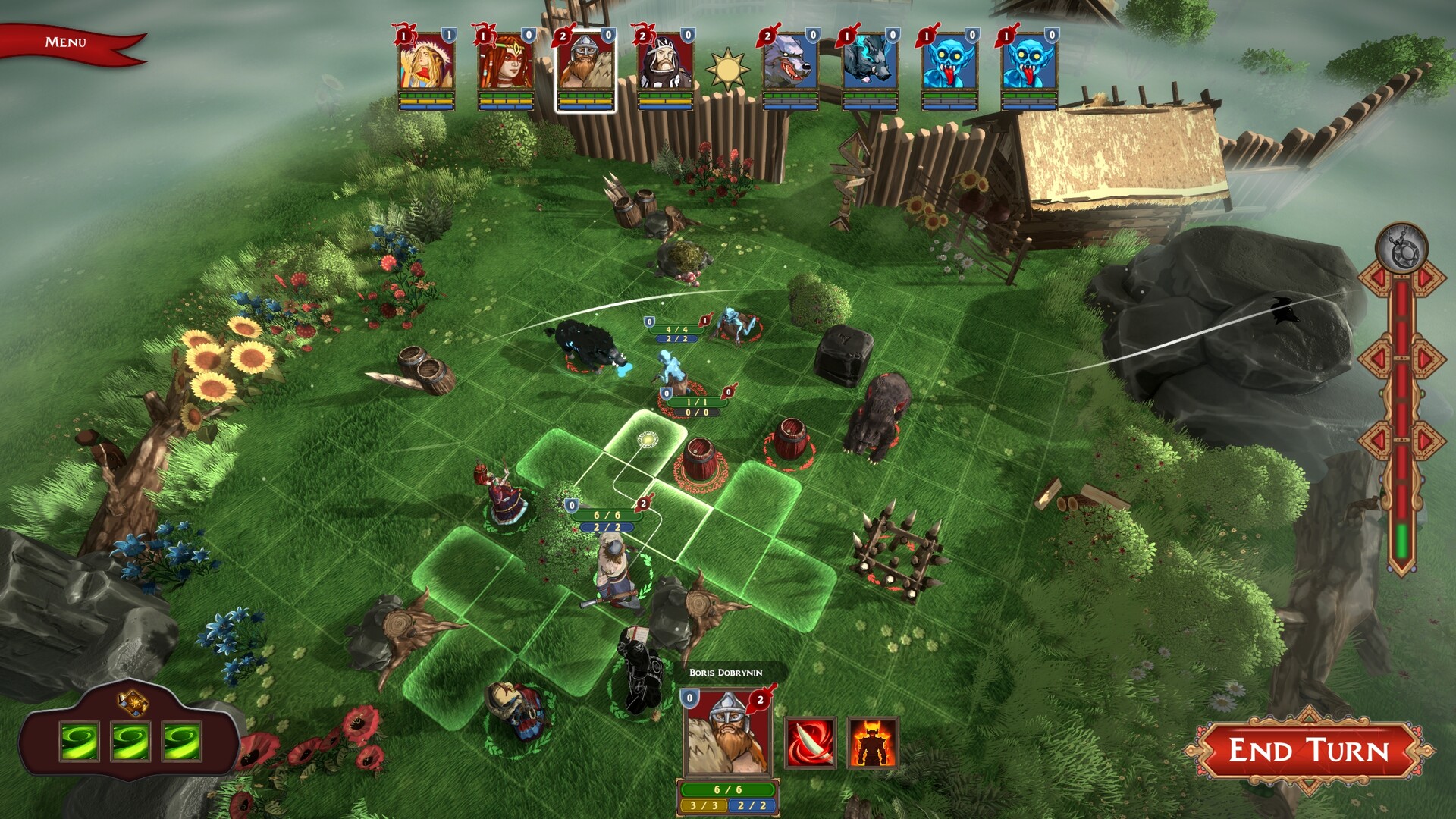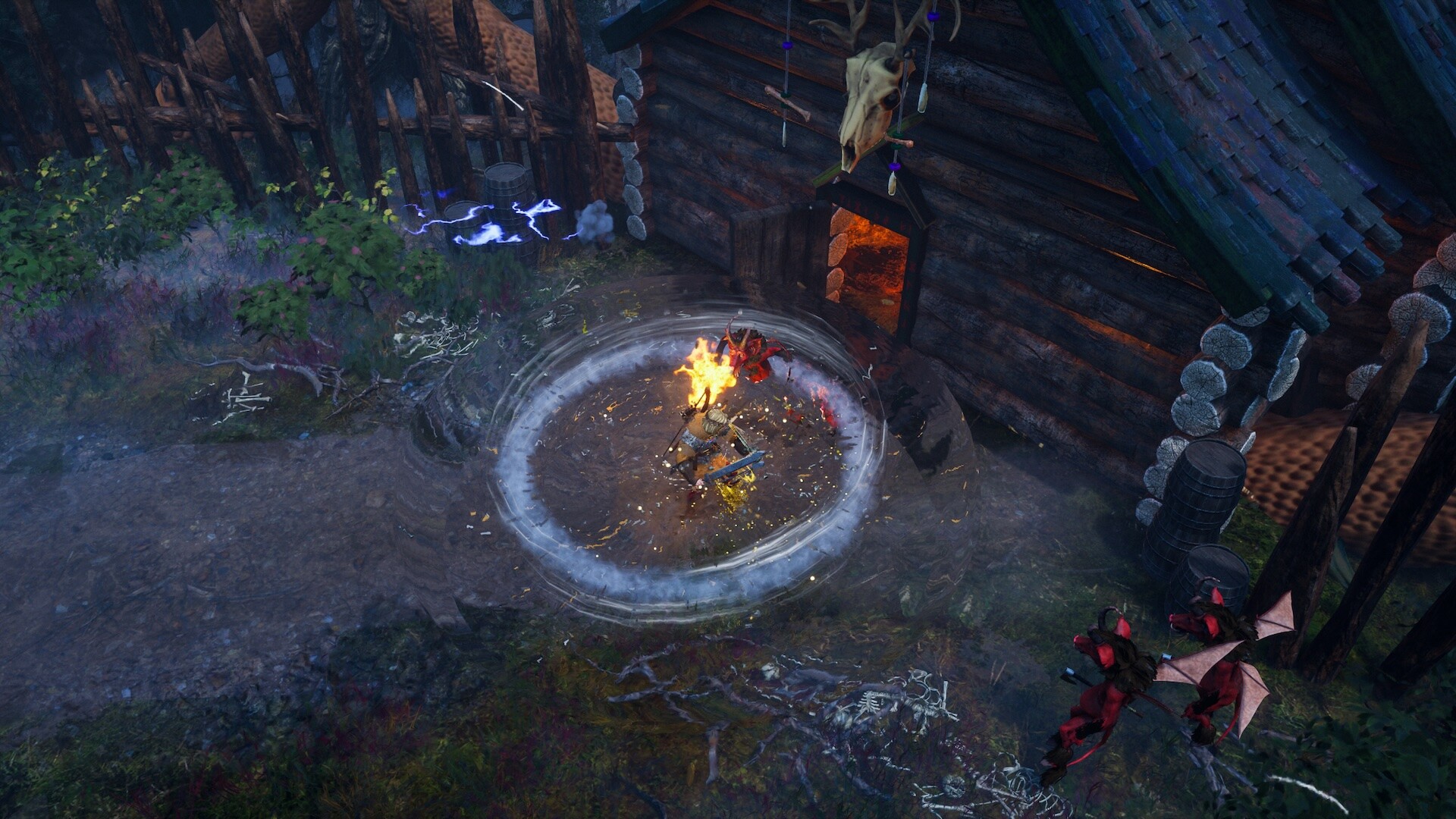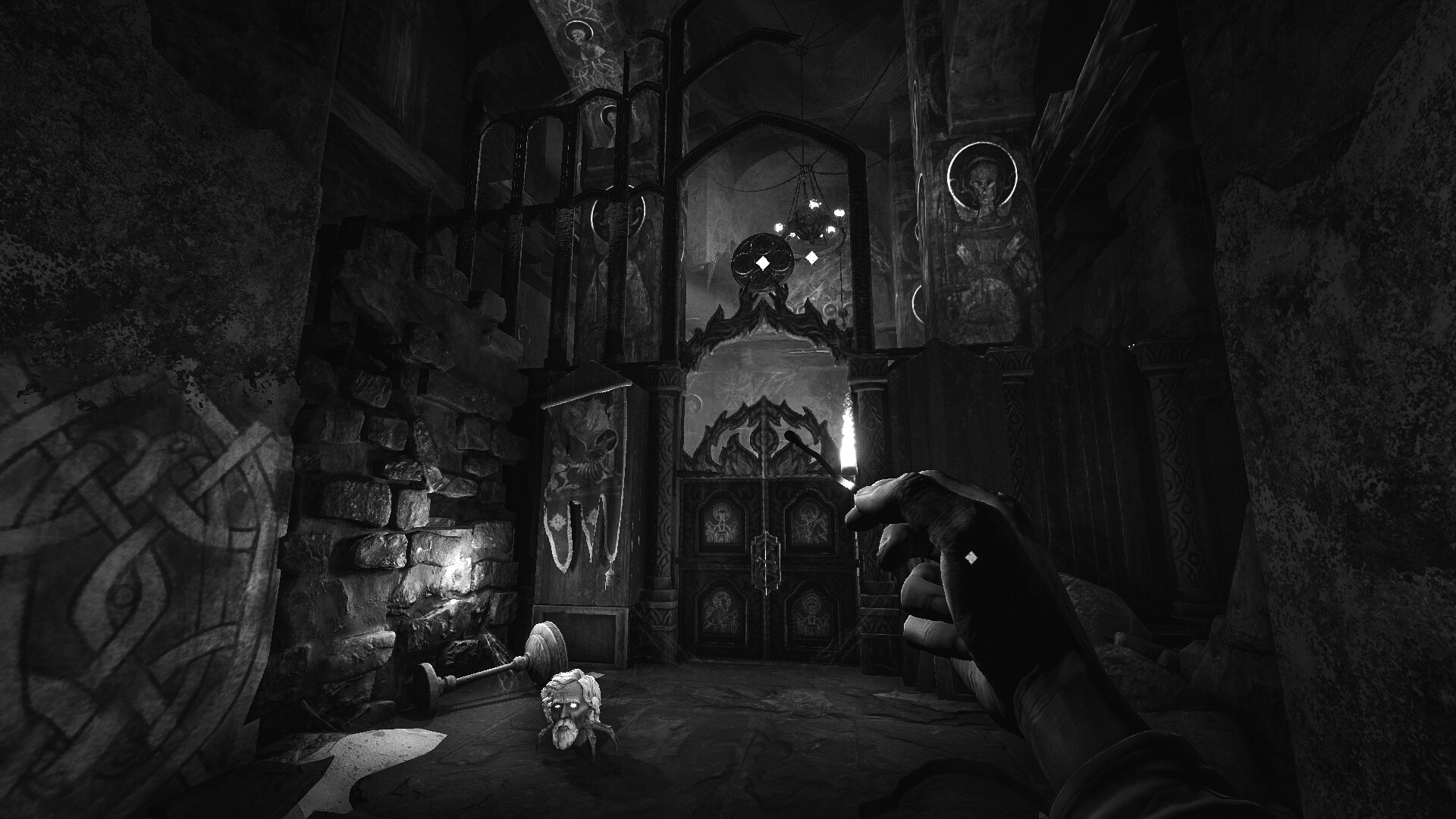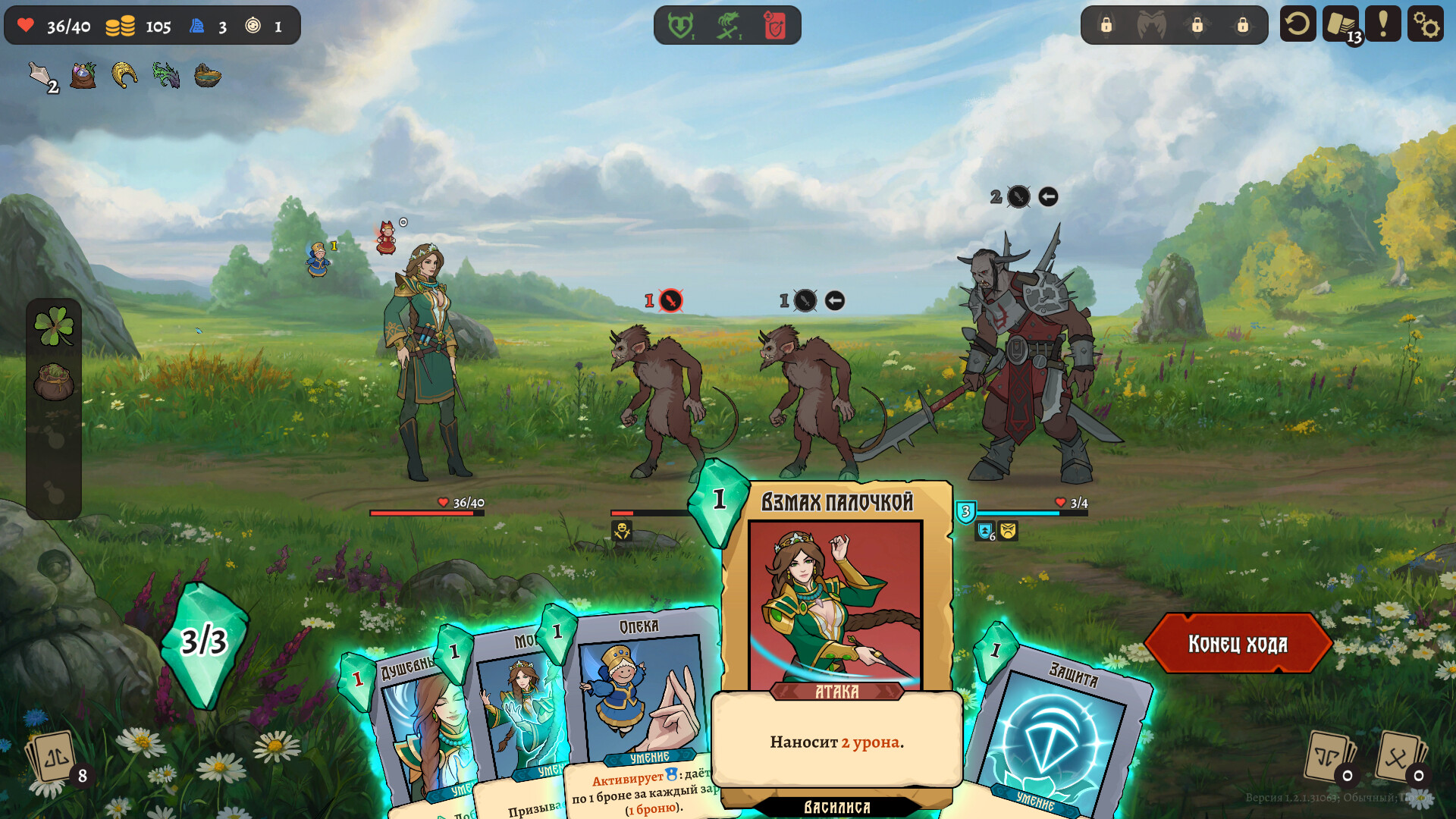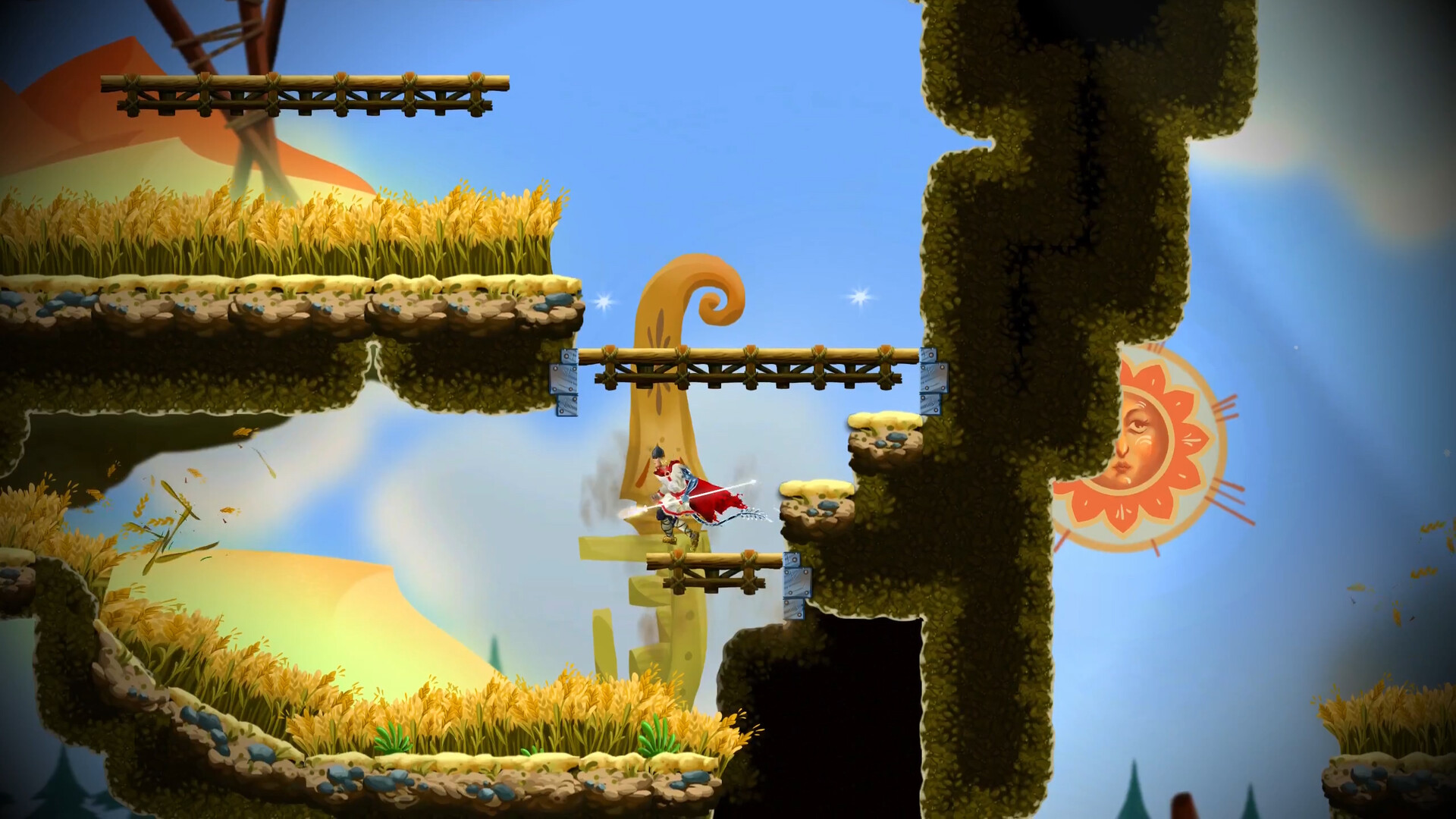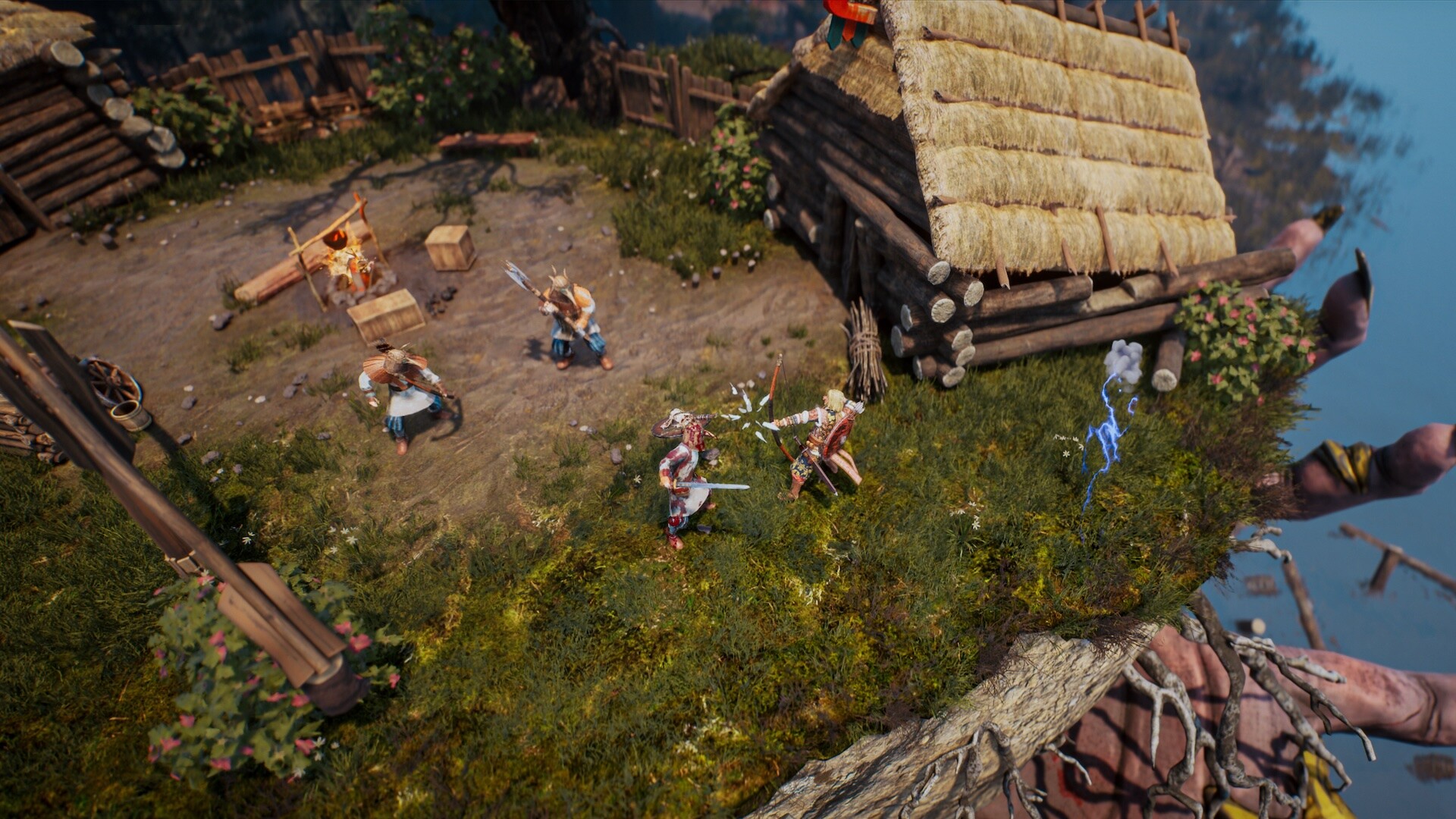Roundtable on Slavic Games: Together with experts, we try to understand whether the setting helps attract money and gain an audience
For the past few years, there has been a trend in Russian game development towards creating games based on Slavic mythology, including Russian fairy tales and epics. We discussed the specifics of working with this theme with representatives from Morteshka, 1C Game Studios, Far Far Games, Game Art Pioneers, Divovision Games, and Watt Studio.
1. Can we really talk about a trend towards Slavic mythology among Russian teams?
Vladimir Beletsky — Founder — Morteshka (“Black Book”, “Licho with One Eye”)
Whether there really is a trend is a matter for separate research. From my perspective, projects that are somehow related to Slavic mythology have become significantly more numerous compared to the time when we were developing “Black Book.” During its development, I personally counted projects related to Slavic mythology. By 2020, there were slightly over a hundred throughout the history of game development. I wouldn’t be surprised if the number of such projects has doubled in the last five years.
Denis Maltsev — Producer — 1C Game Studios (“Immortal: Tales of Old Rus”)
It seems the number of games in the Slavic and near-Slavic settings is growing. In 2024, there were 10 such games counted on DTF, and by 2025 there were already 19 (different ones). However, it seems that the Slavic setting became a selling factor mainly for “Black Book,” which marked the beginning of this new “trend.” Other games have not achieved similar success. So, how much of a trend this is, and how sustainable it is, remains unclear.
“Black Book”
Igor Ilyukhin — COO — Far Far Games (“Bylina”)
Yes, I think it's now fair to say.
However, when we began developing “Bylina” in 2019, there was certainly no talk of a trend. It was a novelty, and people looked at us with, at best, bewilderment. Once we were even advised to stop wasting our time and instead create an app for electric scooter rentals.
Now, the situation has drastically changed. Undoubtedly, you can talk about a strong and stable trend. This is no longer just isolated experiments but a conscious and in-demand trend.
Gleb Kadomtsev — Partnership Programs Director — Game Art Pioneers (Slavania)
Yes and no. In numerical terms, there aren't more of them, but their percentage has increased mainly due to the decline in projects in other settings.
Petr Kostenko — Co-founder and Programmer — Divovision Games (“Song of the Spear”)
It's minimal and confined to a small circle of indie developers. Enthusiasts are experimenting with the setting, trying to serve it with a new twist: sometimes grimdark, sometimes surrealism, sometimes memes about the Rus' and lizards.
“Rus' vs Lizards”
Elena Degtyareva — Executive Producer — Watt Studio (Tsarevna)
Yes, undoubtedly, this is a trend. We see a growing number of projects — from indie studios to larger companies — turning to this cultural stratum. This isn't a sudden spike of interest but a stage of searching for national identity in the gaming industry.
2. If there is a trend, what is it related to?
Vladimir Beletsky — Founder — Morteshka (“Black Book”, “Licho with One Eye”)
I think that first and foremost, this is related to the attempt to find a new setting amidst the plethora of generic fantasy and post-apocalyptic worlds. Against their backdrop, the Slavic setting appears (or appeared until recently) advantageous.
Denis Maltsev — Producer — 1C Game Studios (“Immortal: Tales of Old Rus”)
I think there are several factors at play.
First, people tend to love their own culture. It so happened that in modern Russia, there is more foreign culture than our own. The notion that "imported is better" remained from the late USSR. At some point, import substitution had to start. And so it has.
Second, it became clear that the Slavic setting isn’t an unpopular, hindering factor for selling a game in the West. Just look at the Poles and Czechs.
Third, the success of “Black Book” showed that it’s possible to make games in Russia about Russia.
Igor Ilyukhin — COO — Far Far Games (“Bylina”)
Several factors are clearly evident here: fashion, the political situation, and rich unexplored material. But the main reason is the search for national identity and cultural code. After the overwhelming dominance of Western European and Japanese fantasy, players and developers are experiencing cultural hunger: the desire to see in digital format what is familiar from childhood from tales, epics, and myths. For Russian and Eastern European players, it's diving into a warm, recognizable world, appealing to “genetic memory.” For the global market, Slavic mythology is a fresh, untapped, and exotic cultural layer. It’s a chance to stand out among numerous projects about elves and goblins, Vikings and knights.
Gleb Kadomtsev — Partnership Programs Director — Game Art Pioneers (Slavania)
After recent events, games set in a Slavic mythological setting have become much more noticeable. This is tied to rising patriotism and interest in our own culture and history. However, an important nuance is that this interest has increased primarily within Russia. If we’re talking about games as export-oriented products, the Slavic theme has remained as uninteresting to foreign players as before. Even seemingly Slavic projects like the first “The Witcher” and “Black Book” did not spark significant interest in the setting itself, it wasn’t the key to these games' success.
Petr Kostenko — Co-founder and Programmer — Divovision Games (“Song of the Spear”)
This trend is related to supporting all things domestic amidst sanctions, the rise of national self-identity, and meme-driven buzz. The setting, to put it lightly, is underrepresented in the video game market. It’s still unclear how much demand there is from players. Thus, projects in this setting are risky experiments.
Elena Degtyareva — Executive Producer — Watt Studio (Tsarevna)
This is tied to several factors. Firstly, it’s a cultural demand — the audience has grown tired of standard Western fantasy settings and seeks something familiar and recognizable. Secondly, it’s a creative challenge: for developers, it’s an opportunity not to copy but to create, exploring a rich but still untapped layer of mythology. Finally, it’s a matter of pride — a desire to showcase one’s culture on the global market.
3. Does using the setting require significant immersion into the material, or is stylizing it in a folk-art style sufficient to hit the mark?
Vladimir Beletsky — Founder — Morteshka (“Black Book”, “Licho with One Eye”)
This depends on the project. In our studio, regardless of the setting, we try to understand the theme as deeply as our capabilities allow. For other projects, especially those focused on gameplay, a deep dive may not be necessary.
Denis Maltsev — Producer — 1C Game Studios (“Immortal: Tales of Old Rus”)
Both approaches can work, plus there's a third path. The already mentioned “Black Book” and, for instance, “Vasilisa and Baba Yaga” are nearly exemplary in theme immersion. “Rus' vs Lizards,” on the other hand, is kitsch.
“Vasilisa and Baba Yaga”
As for “Immortal: Tales of Old Rus,” it’s an original universe built on Slavic folklore. The immersion in the theme is substantial but done behind the scenes with significant reworking in the final product.
Igor Ilyukhin — COO — Far Far Games (“Bylina”)
Folk-art stylizations are a no-no! Immersing in the material is the key to creative success!
I can't speak for all developers, but for Far Far Games, depth and authenticity have always come first.
We deliberately and consciously tried to move away from caricatured images of “bears, balalaikas, and kokoshniks” towards deep dives into folklore. We studied materials extensively and involved consultants — historians, ethnographers, and linguists. All this was done to recreate the spirit of the era, not just visible attributes.
Replacing elves and dwarves, we have our own leshiy, kikimoras, house spirits, rusalkas (not the Disney kind, but the real dangerous and cunning ones), banniks, ovinniks, and other unique characters. We’re not making pompous fantasy but Slavic mystical realism, where the dark, dense forest is not just a location but a truly living character. This creates a unique, unfamiliar atmosphere of anxiety and mystery for the player, fueling genuine interest in the game.
Petr Kostenko — Co-founder and Programmer — Divovision Games (“Song of the Spear”)
There aren’t that many materials on Slavic mythology because, unfortunately, very little of it has been preserved to this day. Additionally, some information is simply pseudo-historical fiction by contemporaries. This results in a situation where any project would only be inspired by Slavic mythology rather than be true to it. This gives us fairly flexible framing for the setting and creative freedom, but I think plain folk-art stylization alone won’t suffice.
Elena Degtyareva — Executive Producer — Watt Studio (Tsarevna)
Folk-art stylization works well in casual or comedic projects; it's recognizable and immediately creates the right mood. However, for a deep immersive experience, serious engagement is necessary. For the game “Tsarevna,” we have been and continue to study ethnographic materials, folklore, and architecture to create a world that feels authentic.
This resonates well with our audience on social media: posts related to development details and concept art garner the most passionate discussions. We are especially pleased with how deeply players engage in the process: they ask challenging questions about mechanic implementations and enthusiastically debate interpretations of folklore plots while offering their ideas.
“Tsarevna”
4. In your case, was using the setting a factor in increasing costs or slowing down development (to put it roughly, would it be cheaper/faster if you were making something conventionally fantasy-based)?
Vladimir Beletsky — Founder — Morteshka (“Black Book”, “Licho with One Eye”)
Given that all our studio's projects are based on deeply developed lore, if we had chosen a different setting, similar in-depth work would be required but with a different theme. Perhaps, in our case, Slavic mythology speeds up development because we already have several groundwork pieces, knowledge, and a library of materials.
Denis Maltsev — Producer — 1C Game Studios (“Immortal: Tales of Old Rus”)
In the case of “Immortal,” we used pre-existing characters in a pre-existing world. Naturally, this saved a lot of time and effort. This is why established settings are loved.
“Immortal: Tales of Old Rus”
Igor Ilyukhin — COO — Far Far Games (“Bylina”)
No, in our case, using a Slavic mythological setting wasn’t a significant factor in increasing costs or slowing down development. We would work equally fully and qualitatively on a project in any setting. However, in some aspects, it turned out to be a more advantageous solution than creating a “conventional fantasy” world. Working on a project that matches our cultural code was simpler and more enjoyable for us.
Gleb Kadomtsev — Partnership Programs Director — Game Art Pioneers (Slavania)
The Slavic setting definitely increases development costs, as does any underrepresented setting on the market, because it involves creating unique assets. However, it’s not the case where the costs translate into large sales since the setting itself isn’t a selling point.
Petr Kostenko — Co-founder and Programmer — Divovision Games (“Song of the Spear”)
Certainly, for conventional fantasy, there are already ready-made assets for every taste and style, a vast amount of materials, and so on. That said, I don't think this rare setting significantly slowed us down. The project is quite complex, and if we had pieced it together from a lot of different assets, we would have ended up with a patchwork quilt. Such quilts usually look shabby, and eventually, you have to redo and gradually change assets, creating a certain style.
“Song of the Spear”
Elena Degtyareva — Executive Producer — Watt Studio (Tsarevna)
Yes, that's accurately noted — creating a unique visual style from scratch, based on specific folklore rather than existing classic fantasy templates, demands more time and resources. We conduct extensive research and experiment with forms to find a balance between historical accuracy and game abstraction. Conventional “standard fantasy” would have been cheaper and faster because solutions already exist for it.
5. Does using the setting help attract funding for development?
Vladimir Beletsky — Founder — Morteshka (“Black Book”, “Licho with One Eye”)
We remain an independent studio and are not sure about the current investment market situation. Subjectively, it seems that getting state funding would be easier with a folklore setting.
Denis Maltsev — Producer — 1C Game Studios (“Immortal: Tales of Old Rus”)
In our case, development was conducted with our own funds, and I can't speak for others.
Igor Ilyukhin — COO — Far Far Games (“Bylina”)
When we started developing “Bylina,” it didn’t help at all. The Slavic setting inspired no one but us. Nonetheless, at the initial development stage with our funds, we had 14 awards and nominations in various local and international competitions, including Best Indie at Gamescom Asia 2021.
With the emerging trend and the advent of notable projects backed by the state, I assume the situation might have changed.
“Bylina”
Gleb Kadomtsev — Partnership Programs Director — Game Art Pioneers (Slavania)
It depends on the source. Support institutions like the RDI and RFB obviously are more willing to allocate money for such games. However, developers inevitably need to attract co-financing for projects where investors will look at the potential performance of the game on the global market, where a game with a Slavic setting is weaker.
Petr Kostenko — Co-founder and Programmer — Divovision Games (“Song of the Spear”)
Private investments are deterred by this setting. It’s unstudied; publishers don’t know how to present it; they're not ready to take risks. Many express interest and support, but publishing is a business, and a project in such a setting is a high-risk investment. It might be worth trying for state grants for such a setting, but I can't advise on that.
Elena Degtyareva — Executive Producer — Watt Studio (Tsarevna)
It's a double-edged sword. On one hand, the uniqueness and national flavor can attract publishers and players seeking bright, original projects. On the other hand, there’s always a risk that the concept will be misunderstood in the international market.
The key factor is presentation: it’s necessary to show that the true value of the project lies in its well-developed gameplay that can captivate players worldwide, with the Slavic setting as an addition to this gameplay.
6. Did you notice in promotion that a Slavic setting helps with marketing (at least in Russia), makes you stand out, or allows for easier audience engagement?
Vladimir Beletsky — Founder — Morteshka (“Black Book”, “Licho with One Eye”)
In the case of “Licho,” we were, in fact, surprised that some players were repelled by the Slavic setting at the time of announcing the release date: “another game based on fairy tales!” Meanwhile, when we began the project right after finishing “Black Book,” the choice of setting still seemed unusual.
“Licho with One Eye”
Denis Maltsev — Producer — 1C Game Studios (“Immortal: Tales of Old Rus”)
Unfortunately, no. Neither from personal experience nor observing colleagues can I reach such a conclusion. As of now, the Slavic setting doesn’t promote itself. But, fortunately, it also doesn’t hinder.
Igor Ilyukhin — COO — Far Far Games (“Bylina”)
No, we cannot definitively say that the Slavic setting was a decisive advantage in promotion. Its impact was ambiguous. It largely depends on the specific audience and promotion channel. The majority of players are simply looking for “a good game” — engaging gameplay, beautiful graphics, interesting story. For them, the setting is a secondary or even tertiary factor. Therefore, we tried to make just a great game with material that interests and excites us.
Gleb Kadomtsev — Partnership Programs Director — Game Art Pioneers (Slavania)
Within Russia, yes, it positively affects reviews, and there’s more written about the game, but it doesn’t assist sales. Outside of Russia, given the current geopolitical situation, it’s even more challenging.
Petr Kostenko — Co-founder and Programmer — Divovision Games (“Song of the Spear”)
Yes. Some streamers and media took up our project because the setting is “ours.”
Elena Degtyareva — Executive Producer — Watt Studio (Tsarevna)
In Russia and CIS countries, the Slavic setting immediately evokes a strong response and spurs numerous discussions — both supportive and skeptical. Either way, it provides the opportunity to find a common language with the audience, relying on cultural images familiar since childhood.
7. Did the setting help with sales in Russia?
Vladimir Beletsky — Founder — Morteshka (“Black Book”, “Licho with One Eye”)
Fortunately, we were supported by players, streamers, and the press at the release of “Licho.” It’s difficult to say whether this is solely because of the setting or due to other qualities of the project.
Denis Maltsev — Producer — 1C Game Studios (“Immortal: Tales of Old Rus”)
Of course, many fans of “Tales of Old Rus” bought the game.
“Immortal: Tales of Old Rus”
Petr Kostenko — Co-founder and Programmer — Divovision Games (“Song of the Spear”)
In some ways, yes. Due to media and influencer spotlight
8. Does the Slavic setting affect sales abroad?
Vladimir Beletsky — Founder — Morteshka (“Black Book”, “Licho with One Eye”)
In our case, it is both an attracting and repelling factor for customers. It attracts in the sense that we offer something unique due to the game’s authentic lore. On the other hand, much of what the game offers is incomprehensible to players not immersed in cultural context. This issue was also present in our previous games.
Denis Maltsev — Producer — 1C Game Studios (“Immortal: Tales of Old Rus”)
No. Genre, gameplay, visuals, sound — anything affects sales more than the fact that we have a Slavic setting.
Igor Ilyukhin — COO — Far Far Games (“Bylina”)
For foreign players, Slavic aesthetics are exotic, not nostalgic. Its appeal is based on novelty, not recognition. This requires additional effort to explain the context, mythological characters, and symbols, complicating communication. However, we have been well-received, participating in many thematic exhibitions, and the game has been successful, which we can confidently say. We’ve received attention, good feedback, and following the latest Gamescom, even Deutsche Welle wrote about us.
Gleb Kadomtsev — Partnership Programs Director — Game Art Pioneers (Slavania)
The setting itself doesn’t hold value for foreign players. However, in my opinion, deep immersion into the material can reveal particular intriguing things, which, though not strictly attached to the setting, might add a special touch to the game. But global immersion in the subject here won’t give you anything significant, as the setting is too obscure and doesn’t spark strong interest, unlike antiquity settings or classic medieval themes. The Slavic setting has never been a topic of hyper-focus for most people in childhood or adulthood, even in our country, let alone abroad.
Slavania
Petr Kostenko — Co-founder and Programmer — Divovision Games (“Song of the Spear”)
It’s hard to say, but if yes, not in a positive way. An exotic setting, in this rendition, doesn't capture interest; perhaps a different approach is needed.
Elena Degtyareva — Executive Producer — Watt Studio (Tsarevna)
For Western audiences, the Slavic setting is also an intriguing and fresh exoticism that helps differentiate the project in the global market. But it's essential to remember that the setting is the packaging, and what’s inside must hold value for everyone.
9. Will you continue to use this setting? Is your decision driven by artistic goals or marketing?
Vladimir Beletsky — Founder — Morteshka (“Black Book”, “Licho with One Eye”)
Folklore themes are ingrained in our studio's DNA. We've been working with them even before the setting reached peak popularity, and we'll continue to do so. I believe Morteshka is closely connected with folklore.
Denis Maltsev — Producer — 1C Game Studios (“Immortal: Tales of Old Rus”)
We'll see how it goes. We have many plans, many settings, and we want to do everything.
Igor Ilyukhin — COO — Far Far Games (“Bylina”)
We will continue. For us, “Bylina” is a living world that grows and evolves. We use it actively. Within our game’s universe, a comic book titled “Bylina: Tale of Apraksia” has already been released. It’s a prequel to the events of our game. This comic, the first in a series from an unknown universe, reached the top 10 sales in July, and we are now beginning work on the continuation. Plus, we are in the process of signing for a screen adaptation. We plan to create an anime series in the world of our game, as well as, of course, new games, new projects — sequels and spin-offs.
We've also released a music album with music from the game and songs we wrote specifically for this album. One of them leads a special disc from Metal Hammer magazine dedicated to game music — our “Sokolik” is the first track on this album!
Undoubtedly, for us, this isn’t marketing but pure creativity. We view Slavic mythology as a rich creative universe, not a brand. We have only touched its surface. It's intellectually and artistically interesting for the team. Continuing to work in this aesthetic, we refine our unique style and narrative voice, which become our creative signature.
It’s important to emphasize that our decision is not to churn out identical games, but to develop and deepen the chosen direction. Our next game in the Slavic setting will definitely not be an RPG; we have already tried that and will continue to explore departures from classic tales towards darker or, conversely, more comedic aspects of folklore.
We can also act as consultants on the Slavic setting for other studios or co-produce content.
Yes, we will use this setting further. Our primary driver is artistic interest and accumulated expertise. We see Slavic mythology as our creative territory, which we are just beginning to explore.
“Bylina”
Gleb Kadomtsev — Partnership Programs Director — Game Art Pioneers (Slavania)
A purely Slavic setting isn’t a serious unique selling proposition. However, it can become a sort of seasoning for a game built on another, more popular setting, like grimdark, as seen in various soulslike games. Or through another successful combination of styles. Using Slavic mythology as part of a more complex and unique setting is a path we will definitely pursue in some of our projects.
Petr Kostenko — Co-founder and Programmer — Divovision Games (“Song of the Spear”)
Maybe, but later. For now, we'll move on, rethink, and return when we find a good implementation.
Elena Degtyareva — Executive Producer — Watt Studio (Tsarevna)
Future plans are always difficult to predict. Currently, our team is fully focused on developing current projects — “Tsarevna” and Plushes. The universe we're creating for “Tsarevna” is turning out so deep and multifaceted that it undoubtedly has room for new stories, but we’re not confined to just one theme and are always open to experimentation. In the future, we will consider our audience's interests to create new unique worlds, whether it’s Slavic folklore or something entirely new.
“Tsarevna”
